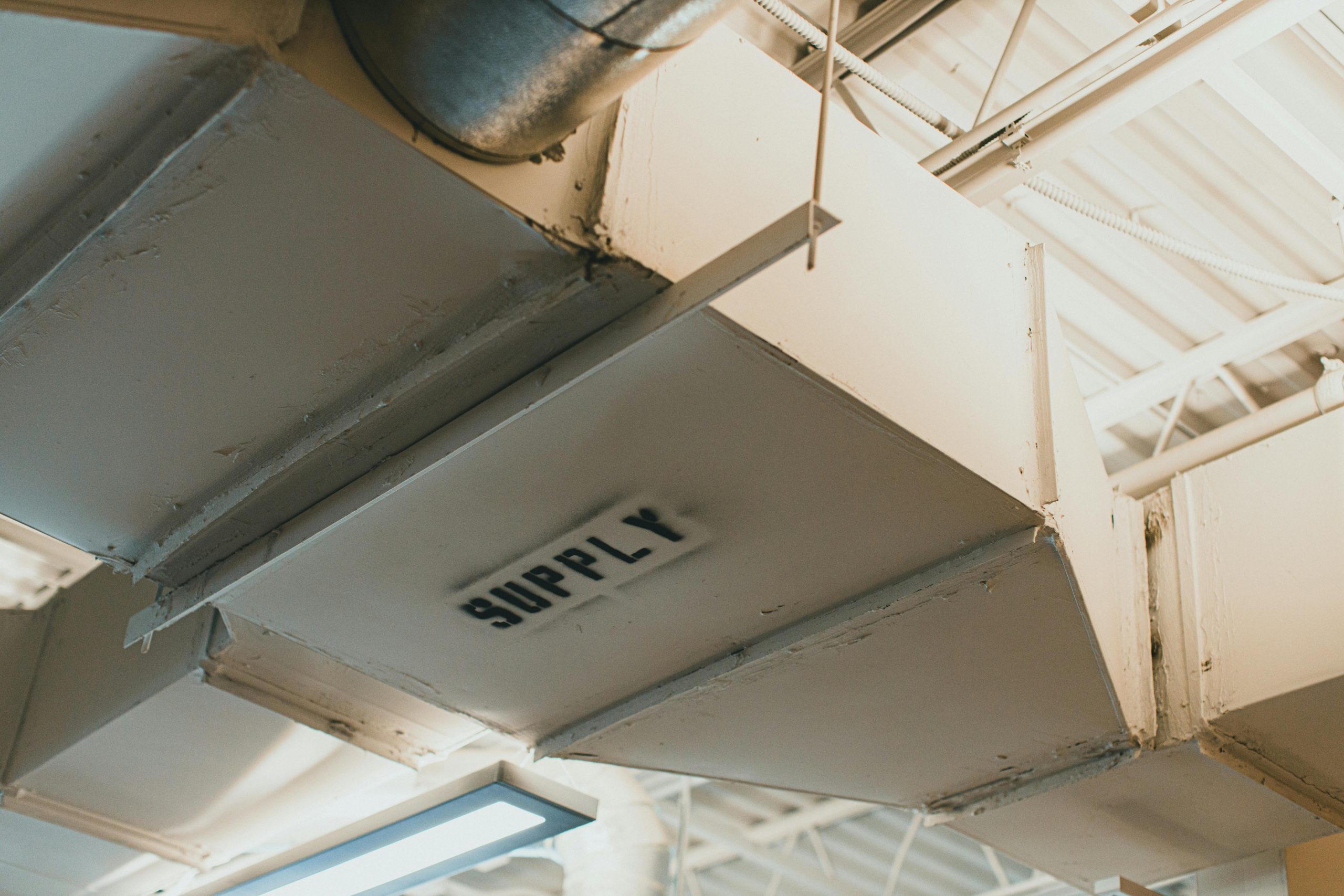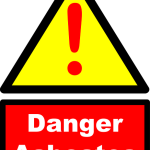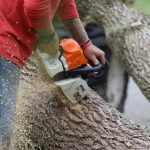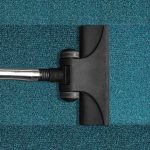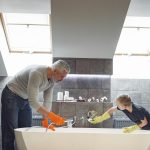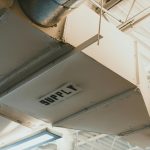Improving indoor air quality starts with thorough air duct cleaning. Trusted experts enhance ventilation efficiency while reducing allergens and contaminants, creating healthier environments for employees and customers alike. Discover how advanced cleaning techniques and comprehensive services protect your space, ensure compliance, and boost system performance, making premium air duct care an essential investment for any business.
Ensuring High Indoor Air Quality and Energy Efficiency with Professional Expertise
Maintaining a healthy indoor environment hinges significantly on the quality of air circulating through duct systems. Professional Duct Cleaning Services plays a central role in reducing pollutants such as dust, mold spores, pet dander, and bacteria. These contaminants, if left unchecked, contribute to poor air quality, allergic reactions, and even health issues like asthma and respiratory infections.
Also to discover : Sparkling windows: discover trusted window cleaning services
The process of air duct cleaning enhances indoor air quality by systematically removing these airborne impurities. It also diminishes allergens and dust accumulation, which can trigger allergy symptoms or exacerbate respiratory conditions. The benefit extends beyond health; energy efficiency improves as clean ducts facilitate better airflow. An HVAC system free from buildup doesn’t have to work as hard, leading to lower energy bills and prolonged system lifespan.
Leading providers such as Duct Cleaning Services, Swiftclean, Rentokil, and Clean Air UK offer a range of services tailored to both residential and commercial needs. Their comprehensive solutions typically include duct inspection, cleaning with advanced equipment, and additional measures such as duct sealing and UV sanitation. For those seeking the most reliable, high-quality services, checking their credentials and customer reviews is recommended.
This might interest you : Unlock expert a-level maths tutoring for your success
The Significance of Air Duct Cleaning in Maintaining Healthy Indoor Environments
Enhancing Indoor Air Quality and Reducing Allergens
Air duct cleaning benefits are realized immediately when accumulated dust, mold, bacteria, and pet dander are removed from ductwork. This directly results in improved indoor air quality by preventing the recirculation of harmful particles. The professional duct cleaning process, using negative air pressure and agitation tools, targets both visible and hidden contaminants, crucial for reducing allergens and dust throughout residential and commercial spaces. For individuals with sensitivities, eliminating these triggers ensures noticeable relief from respiratory symptoms. Left unaddressed, dirty ducts are known culprits in the persistence of sick building syndrome—manifesting as headaches, fatigue, or irritation for occupants—highlighting the value of routine air vent cleaning for both health and comfort.
Health and Safety Benefits for Residential and Commercial Spaces
Dirty ductwork presents direct health impacts, as it harbors allergens and pathogens that circulate via HVAC systems, putting staff, residents, and customers at risk, especially those with asthma or chronic respiratory issues. By using certified residential duct cleaning services and commercial duct cleaning options, airborne pollutants are dramatically reduced. This not only fosters healthier indoor environments but also meets compliance standards mandated by TR19 or Health & Safety legislation. By addressing mold removal from air ducts and ensuring proper ductwork cleaning, businesses and homes support vulnerable populations, such as children, seniors, and immunocompromised individuals, with safer, cleaner air. Well-maintained systems also help avoid legal and insurance complications that can arise from unmanaged contamination, further underscoring the air duct cleaning benefits for all sectors.
Energy Savings and HVAC System Efficiency
Professional duct cleaning yields immediate and lasting energy efficiency improvements. Blockages and debris force HVAC systems to work harder, reducing airflow and raising utility bills—a problem addressed through improved HVAC airflow achieved by cleaning. Cleaner ductwork supports overall HVAC system maintenance, extending the lifespan of equipment and minimizing the risk of costly breakdowns. This regular intervention prevents premature system wear and damage due to excess dust accumulation and microbial growth. Advanced solutions, such as duct sealing and repair, complement the professional duct cleaning process, ensuring system airtightness and further optimizing energy use. These practices bring measurable reductions in energy consumption for both homes and businesses, demonstrating yet another layer of air duct cleaning benefits that contribute to a safer, healthier, and more affordable living or working environment.
Professional Air Duct Cleaning Techniques and Industry Standards
Overview of Certified Cleaning Methods
The professional duct cleaning process relies on several high-efficiency techniques that ensure thorough removal of dust, microbial buildup, and other contaminants from air duct systems. Mechanical brushing is frequently paired with air jet cleaning to dislodge debris attached to ductwork, while negative pressure cleaning—which uses powerful extraction devices—prevents loose dust from escaping into occupied areas. Technicians routinely apply microbial disinfection and air duct sanitation to eliminate bacteria, viruses, and mold, meeting the rising demand for cleaner, healthier building environments.
To maintain quality and legal compliance, the field adheres to strict industry standards. The most recognized of these are TR19® (developed by BESA), which prescribes detailed procedures for kitchen duct cleaning and regular cleaning in commercial and healthcare settings, and BS1578 for routine duct cleaning. Each standard defines acceptable cleanliness levels—confirmed by dust measurement and microbial testing—to guarantee both hygiene and fire safety, especially in kitchens and healthcare facilities. TR19 certification is a benchmark many reputable providers must achieve, issuing certificates post-cleaning as formal evidence of regulatory compliance.
Inspection, Testing, and Diagnostic Tools
A robust professional duct cleaning process begins with duct inspection before cleaning. This assessment, which can include visual checks and photographic documentation, is vital in identifying contamination levels, signs of mold, debris from renovations, or biological pollutants such as rodent intrusion in ductwork. Modern diagnostic tools facilitate air quality testing before and after cleaning, ensuring quantifiable improvements in the indoor environment. The Preferred Vacuum Test (PVT) is often used to analyze settled dust and evaluate whether the system meets TR19® or BS1578 standards post-cleaning. By comparing pre- and post-cleaning data, providers demonstrate both the effectiveness of cleaning techniques and compliance with maintenance policies—giving facilities clear evidence supporting their air duct cleaning benefits.
The Role of Access Points and Customization
Proper access within ductwork is crucial for any professional duct cleaning process to meet industry standards such as TR19 certification. Many legacy systems lack sufficient access panels, making routine duct maintenance and verification difficult. Technicians may install additional access doors to accommodate negative pressure cleaning or mechanical brush tools, ensuring no section of the duct is unreachable. This practice also streamlines future inspections and repairs, maximizing the effectiveness of HVAC system maintenance.
Customization is another vital component, especially for diverse environments. Specialists tailor cleaning routines to match each facility’s risk profile and operational needs: hospital ventilation systems, for example, require more frequent and stringent cleaning schedules, while storage rooms or light commercial offices might follow less intensive routines. Regular maintenance programs help uphold system hygiene—mitigating risks of allergen buildup, supporting energy efficiency improvements, and helping businesses secure insurance or meet legislative obligations.
Ultimately, advanced cleaning techniques, strict inspection protocols, and adherence to leading standards such as TR19 ensure that both residential duct cleaning services and commercial duct cleaning options deliver measurable health benefits, optimize HVAC airflow, and preserve regulatory compliance for safer, more efficient environments.
Choosing the Right Duct Cleaning Provider for Your Needs
Key Factors in Selecting a Reputable Provider
In the professional duct cleaning process, choosing a provider starts with confirming proper certification and up-to-date industry training. Look for licensed and insured contractors who follow recognized standards such as TR19 for kitchen duct cleaning or building ventilation care. Certification ensures adherence to safety, regulatory compliance, and technical best practices, which is critical for both residential duct cleaning services and commercial duct cleaning options.
Service reviews and ratings provide a snapshot of customer satisfaction and reliability. High service reviews and ratings signal that the business consistently delivers on its promises, such as improving indoor air quality and reducing allergens and dust. Review platforms, as well as business registers, help validate claims regarding timely completion, professionalism, and the effectiveness of air duct cleaning benefits.
Transparency is essential. Reputable providers offer clear quotations that detail duct cleaning cost factors, explain guarantees, and deliver post-cleaning certification reports. These reports should confirm cleaning effectiveness, especially for mold removal from air ducts or HVAC system maintenance, giving peace of mind about legal compliance and improved indoor air quality.
Cost Considerations and Cost Factors
Pricing for local duct cleaning services can vary according to regional differences, system complexity, and the scale of contamination. Average air duct cleaning prices in the UK will depend on the type of system, number of vents, and add-on services such as duct sealing and repair or air duct sanitation and disinfection. The presence of mold removal from air ducts, or the need for additional fire damper testing, can raise the total cost, as can eco-friendly duct cleaning methods or advanced air duct cleaning equipment.
When comparing providers, focus not just on headline costs but on the breadth of value delivered—does the provider offer air duct inspection before cleaning, professional documentation, and guarantees regarding dust mite reduction or pet dander removal? Obtain several quotes to understand market rates, and always check for what is and is not included to prevent hidden costs. Licensed and insured contractors will clarify factors such as cleaning frequency recommendations, potential discounts or deals, and any warranties attached to the job.
Additional Services and Specializations
Top-tier residential duct cleaning services and commercial duct cleaning options often extend beyond standard duct cleaning. Kitchen extract cleaning, specialist fire damper testing, or robust solutions for mold removal from air ducts add further value and safety to properties. Some providers also deliver environmental hygiene and water treatment services, supporting more comprehensive health solutions inside buildings.
Integration of smart home air quality solutions is rising—providers may advise or install whole-home air purification systems, advanced air filter replacement and maintenance, or air quality monitoring devices. These added features can maximize the air duct cleaning benefits and deliver continual indoor air quality improvements. The best providers are not only skilled in the core professional duct cleaning process but also keep pace with technology for controlling dust, allergens, and system performance, bolstering energy efficiency improvements and long-term health.
By focusing on these factors, you ensure that your provider matches your requirements for certified expertise, thorough process, regulatory compliance, and responsive customer care. This lays the groundwork for a healthy, safe, and energy-efficient environment for homes and businesses alike.
Incorporating Duct Maintenance into Overall Indoor Air Quality Strategies
Routine Maintenance and Preventative Measures
Indoor air quality management begins with routine practices that support HVAC system maintenance and air duct cleanliness. Regular cleaning of vents and surrounding areas effectively reduces dust buildup, directly contributing to improved indoor air quality and reducing allergens and dust within living or workspace. Filter replacement remains essential: clogged filters restrict airflow and allow contaminants to recirculate, undermining the air duct cleaning benefits delivered by prior professional or residential duct cleaning services. High-quality filters designed for allergen reduction and consistent filter changes support both energy efficiency improvements and respiratory health.
Balancing the ventilation system and using supplemental air filtration devices—such as standalone HEPA air purifiers—help capture lingering airborne particulates, offering another layer of defense against the health impacts of dirty ducts. DIY air duct cleaning tips, such as using extendable duster tools for accessible grilles and ensuring vent covers stay clear of obstructions, can help maintain system cleanliness between scheduled visits. These preventative strategies ensure professional duct cleaning process results are sustained, making DIY maintenance tips an effective way to prolong the benefits for both commercial duct cleaning options and residential properties.
When to Schedule Professional Duct Cleaning
Certain warning signs clearly indicate the need for a professional duct cleaning process. Reduced airflow from vents, persistent dust despite frequent cleaning, musty or unpleasant odors, and visible mold or dust within ductwork signal that it’s time to consult residential duct cleaning services or commercial duct cleaning options. Sudden increases in allergy or respiratory symptoms among building occupants also indicate a decline in air quality, often linked to the accumulated health impacts of dirty ducts.
Professional guidance recommends duct cleaning frequency be tailored to building type, system usage, and local environment. In homes with pets, smokers, or individuals with allergies, high-frequency cleaning—every one to two years—may be warranted. For typical residential settings, a three- to five-year interval suffices, unless unusual contamination (such as post-renovation dust) occurs. Seasonal duct cleaning tips suggest scheduling professional maintenance during low-use periods—such as spring or autumn—maximizing the air duct cleaning benefits before seasonal heating or cooling demands increase. Adhering to these duct cleaning frequency recommendations prevents larger issues and protects HVAC system maintenance investments.
Upgrading and Sealing Ventilation Systems
Upgrades and targeted repairs to ventilation systems further enhance energy efficiency improvements and support indoor air quality objectives. Duct sealing and repair, most notably through proven technologies like Aeroseal, address hidden leaks responsible for energy loss and uneven air distribution—issues that often negate the health benefits of duct cleaning if left unresolved. The use of Aeroseal in air duct sealing eliminates gaps from within the ductwork, which not only conserves energy but also helps in reducing allergens and dust, since fewer contaminants infiltrate or escape the ventilation paths.
Signs necessitating these ventilation system upgrades include increased energy consumption, inconsistent temperatures across rooms, drafts near ducts, or dust and debris accumulation despite regular cleaning and maintenance. Solving these issues often involves both duct sealing and insulation improvements. Solutions may include comprehensive ductwork inspection, targeted air duct cleaning, air filtration upgrades, and expert application of sealant products. By combining ongoing HVAC system maintenance with scheduled inspections, brush and vacuum duct cleaning, and professional sealing, property owners foster long-term air quality and maximize the health benefits of their indoor spaces.
The Impact of Professional Duct Cleaning on Building Safety and Compliance
Ensuring Regulatory Compliance and Certifications
Adhering to fire safety standards, health regulations, and legal requirements is crucial for all facilities. TR19 compliance serves as the cornerstone for establishing proper protocols. The TR19® Air specification—set by the Building Engineering Services Association (BESA)—determines inspection and cleaning regimes tailored to the building’s risk profile. For example, healthcare sites require a high level of cleanliness, with duct contaminants measured to stay below set thresholds via the European Vacuum Testing method.
Legal obligations demand that building managers uphold health and safety laws such as the Health & Safety at Work Act 1974 and Occupiers Liability Act 1984. Failure to maintain ventilation systems can result in invalid insurance or prosecution, so certified air duct cleaning that meets TR19 compliance is non-negotiable. Certification not only confirms that documented, safe procedures are followed but also provides critical insurance and legal protection. Upon completion, building owners receive detailed post-cleaning reports and certificates—essential documents for audit trails and insurance requirements, especially within food, healthcare, and education sectors.
Fire Safety and Hygiene Protocols
Meeting fire safety standards extends beyond routine cleaning. Kitchen extract and grease vent cleaning are core requirements to prevent fire hazards caused by grease accumulation. TR19 compliance mandates not only comprehensive ductwork cleaning but also regular fire damper testing and thorough ventilation audits, decreasing the likelihood of fire spread. Facilities such as hospitals, restaurants, and schools face stringent hygiene regulations due to high risk and occupancy levels. Regular, certified checks ensure ventilation systems are unobstructed and sanitized, safeguarding both public health and business continuity.
Fire damper testing is indispensable for compliance with legal requirements. Dampers are tested and inspected for corrosion or blockages, and any defects are addressed immediately. Commercial kitchens require specialist ductwork and vent cleaning to keep grease levels within legislated limits; this contributes to both fire risk reduction and meeting insurer obligations. Accurate record-keeping and audit logs from certified cleaning providers complete the cycle, demonstrating ongoing compliance and protecting the premises from regulatory penalties.
Supporting Sustainable and Eco-Friendly Practices
The adoption of eco-friendly duct cleaning methods further supports compliance with contemporary health regulations and sustainability initiatives. Providers use high-efficiency vacuum systems and disinfecting agents that are biodegradable, limiting chemical exposure while maintaining hygiene standards. Integrating green technologies—such as UV light or advanced microbial disinfection—improves indoor air quality without burdening the environment and complies with rising environmental policy expectations.
Routine and responsible HVAC system maintenance limits waste, reduces system strain, and enhances energy efficiency. Sealing and repairing duct leaks—especially with technologies like Aeroseal—curbs unnecessary energy loss and ensures optimal airflow. This proactive approach tackles both operational costs and environmental footprint, aligning building operations with legal requirements and corporate social responsibility targets.
In every sector, from healthcare to retail, the professional duct cleaning process underpins robust compliance with fire safety standards, empowers optimal HVAC system maintenance, and delivers substantial health benefits. This commitment to compliance, safety, and sustainability makes routine air duct cleaning a foundational practice for modern property management.
The Benefits of Specialized Duct Cleaning Services for Diverse Sectors
Healthcare and Hospital Ventilation Systems
Air duct cleaning benefits in healthcare environments extend well beyond visible cleanliness—a sanitized duct system is foundational for infection control and respiratory health. NHS guidelines require meticulous HVAC system maintenance, with a particular focus on reducing allergens and dust that can pose risks to vulnerable patients. Regular professional duct cleaning processes use advanced tools and periodic microbial sampling to target mold removal from air ducts and to monitor indoor air quality. These steps ensure that airborne pathogens are minimized and rooms—especially surgical theatres and critical care—not only meet but often exceed regulatory standards. Specialized teams conduct duct cleaning frequency recommendations based on risk assessments and industry compliance schedules. For healthcare settings, periodic air duct cleaning and air vent cleaning importance are underscored by the need to maintain clean airflow and prevent cross-contamination between zones. This guarantees improved patient safety, reinforces staff confidence, and supports continual compliance with NHS and health authority regulations.
Commercial Kitchens and Food Industry
Commercial kitchens demand focused commercial duct cleaning options to address the risk of grease buildup, fire hazards, and odor infiltration. TR19® kitchen duct cleaning is the recognized benchmark, requiring licensed and insured contractors to perform comprehensive hygiene and fire safety maintenance. The professional duct cleaning process in high-use kitchens combines brush and vacuum duct cleaning, negative air pressure, and tailored cleaning schedules—all supervised by certified technicians. Removing grease and controlling airborne particulates extends HVAC lifespan and directly supports inspection-ready hygiene standards. Mold removal from air ducts and regular air duct cleaning and HVAC filter replacement further contribute to preventing kitchen fires and maintaining compliance with food safety regulation. Well-executed duct sealing and repair after cleaning boost HVAC energy efficiency and keep operational costs manageable, making scheduled maintenance a cornerstone for food production facilities nationwide.
Industrial and Sensitive Environments
Industrial buildings and sensitive environments present unique challenges that call for customized residential duct cleaning services and commercial duct cleaning options. Legacy duct systems, often found in older manufacturing sites or data centers, may harbor dust, chemical residue, and biological contaminants that threaten employee health and system reliability. Professional duct cleaning addresses these concerns through a combination of eco-friendly duct cleaning methods, dust mite reduction techniques, and advanced ductwork cleaning protocols designed for specific site requirements. Air duct cleaning benefits are amplified in these settings: reducing allergens and dust safeguards staff against exposure, while tailored cleaning protocols for legacy duct systems optimize equipment performance. Advanced HVAC system maintenance routines leverage both duct sealing and repair services and ongoing air quality testing, supporting regulatory compliance and production continuity. Air vent cleaning importance escalates in environments where particulate contamination or air circulation issues impact sensitive processes or storage.
In every case, aligning duct cleaning frequency recommendations with risk factors, regulatory codes, and operational needs ensures clean, healthy, and energy-efficient spaces. These specialized approaches demonstrate the versatility and necessity of professional duct cleaning services for sectors where safety, performance, and compliance cannot be compromised.
Additional Measures to Optimize Indoor Air Quality and Duct System Longevity
Integrating Air Filtration and Sanitation Technologies
The use of advanced air filtration and robust air duct sanitation techniques delivers measurable improvements in indoor air quality and reduces particles, pathogens, and allergens in ventilation systems. UV light air purification, a well-established method in air duct sanitation, employs ultraviolet light to inactivate bacteria, viruses, and mold on ductwork surfaces. In parallel, electrostatic and HEPA filtration solutions physically capture and retain dust, pollen, and other airborne contaminants, enhancing the protection achieved by air duct sanitation. When integrated, these approaches address both microbial disinfection and particulate removal, resulting in significant reductions in respiratory irritants and supporting comprehensive air duct cleaning benefits.
Monitoring indoor air quality now leverages smart devices, enabling continuous tracking of PM2.5, VOCs, and humidity levels. This proactive approach ensures that air duct sanitation and ventilation upgrades translate into sustained indoor comfort and healthier living or working environments. By implementing these measures, property managers and homeowners can track the long-term effects of filtration, adjust cleaning schedules, and promptly detect rising contaminant trends.
Sealing and Repair for Duct Leak Prevention
To prevent wastage and maintain ideal air volumes throughout a building, identifying and addressing air leaks with duct sealing is essential. Aeroseal stands out for its ability to seal ductwork from the inside, targeting even small leaks that manual inspections might miss. Duct sealing provided by Aeroseal improves energy efficiency by restoring system airtightness and leads to fewer drafts, more consistent temperatures, and better control over indoor air quality.
Routine duct inspections with air quality testing are key in both commercial and residential settings. These inspections help detect minor breaches or weaknesses before they grow into significant causes of air loss, reduced efficiency, and diminished effectiveness of previous air duct sanitation measures. Duct sealing should be part of every long-term HVAC management plan—delivering direct savings on utility bills while supporting air duct sanitation outcomes by isolating conditioned air and blocking outside contaminants.
Seasonal and Ongoing Maintenance Strategies
Effective duct system management relies on structured maintenance strategies. Seasonal air duct cleaning, paired with scheduled air quality testing, anticipates the predictable buildup of dust and allergens during peak heating or cooling use. These cleaning interventions reinforce existing air duct sanitation, keeping system performance high and air circulation unobstructed.
Incorporating duct maintenance into wider building management ensures early detection of performance issues or signs of system fatigue. Maintenance plans should schedule air duct sanitation, duct sealing inspections, and ventilation upgrades at intervals suited to system age and building type. Preventive actions—such as filter replacements, minor repairs, and targeted air quality testing—support HVAC longevity and preserve healthy indoor conditions for all occupants.
Combining these additional measures with previous air duct sanitation practices fosters a resilient, energy-efficient, and healthy property. Regular assessments and the adoption of advanced filtration and sealing technologies transform standard maintenance into a proactive, data-informed process benefiting both system durability and human health.

